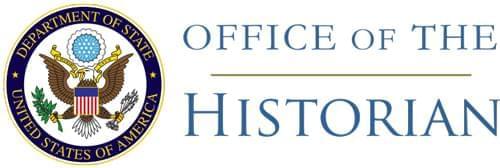331. Notes from transcripts of JCS meeting, October 181
NOTES TAKEN FROM TRANSCRIPTS OF MEETINGS OF THE JOINT CHIEFS OF STAFF, OCTOBER–NOVEMBER 1962, DEALING WITH THE CUBAN MISSILE CRISIS(Handwritten notes were made in 1976 and typed in 1993.)
CJCS: Chairman, Joint Chiefs of Staff. General Maxwell D. Taylor, USA.
CSA: Chief of Staff, Army. General Earle G. Wheeler.
CSAF: Chief of Staff, Air Force. General Curtis E. LeMay.
CNO: Chief of Naval Operations. Admiral George W. Anderson, Jr.
CMC: Commandant, Marine Corps. General David M. Shoup.
CONAD: Continental Air Defense
DIA: Defense Intelligence Agency
DJS: Director, Joint Staff
LANT: Atlantic
NORAD: North American Air Defense
OAS: Organization of American States
RCT: Regimental Combat Team
SAM: Surface-to-Air Missile
TAC: Tactical Air Command
[Facsimile Page 2]Thursday, 18 October
JCS meeting at 0930 (Gen. LeMay, previously represented by Gen. McKee, now joined discussions):
DIA officers give results of U–2 mission of 15 October. Photos were shown of four bases: Guanajay; San Julian; San Cristobal; and Santa [Typeset Page 1060] Cruz. Mr. McLaughlin said it will take six months to make the sites completely operational.
CJCS: Now permanent missile sites show up. This is really significant. I now feel air strikes are not enough, and occupation is the only answer.
CJCS gives debriefing on last night’s meeting. Five courses of [Facsimile Page 3] action were considered.
A: Inform West European leaders and some Latin American leaders on Tuesday. On Wednesday, hit missile sites only, make a public statement and send a message to Khrushchev. Then wait and see what happens. Rejected by Rusk.
B: Same as above, but notify Khrushchev about three days beforehand and wait about three days to obtain his reply. Rejected by Defense.
C: Tell them we know where the missiles are and we are going to stop any more from coming in. Then would follow declaration of war, complete blockade, air surveillance, and readiness for additional actions. State is optimistic about this one.
D: After limited political preliminaries, strike all targets except those connected with invasion. Prepare for invasion, possibly blockade.
E: Same as D, with no political preliminaries. There was no support for this, but CJCS feels there may be some stiffening when they see today’s intelligence. CJCS says I have changed my mind on invasion, and I think they will too.
JCS agreed that minimum should be Course E, with complete blockade and air strikes on all significant targets except those that might be struck for an invasion.
JCS also agreed that, if a decision is made to hit only the missile sites, 11–28s also should be hit.
JCS meeting at 1400, attended by Operations Deputies:
CJCS debriefs on White House meeting this morning: Rusk said the new information had changed his outlook. Action would have to be taken, and of a heavier kind than was contemplated [Facsimile Page 4] yesterday. But Rusk still thought Khrushchev should be informed in advance. SecDef said that new intelligence called for invasion. In the car, SecDef told CJCS that if he knew there was an operational missile in Cuba, it would change his outlook since we would have to go nuclear. Three plans were being considered: (1) maximum political effort; (2) a combination with military effort being built around blockade then reconnaissance; (3) no political discussion—air strike followed by invasion. Plan (1) is out. CJCS said he asked the President if we could discard the partial air strike. We agreed to do Category III, IV, or V (see 17 Oct. 1000 meeting). Next State proposed a five-day preliminary, talking to Khrushchev, UN and OAS; then clamp on blockade and state of war. [Typeset Page 1061] The President seemed to feel we should hold back until we get a feel for the Russian reaction.
CSAF: Are we really going to do anything except talk?
CJCS: Definitely. Probably there will be a political approach, followed by warning, a blockade, hitting the missiles, and invasion—in that order. We will probably start in the early part of next week.
- Courses of action in Cuba. Secret. 4 pp. DOD, Office of the Chairman of the Joint Chiefs of Staff, Office of Joint History.↩
